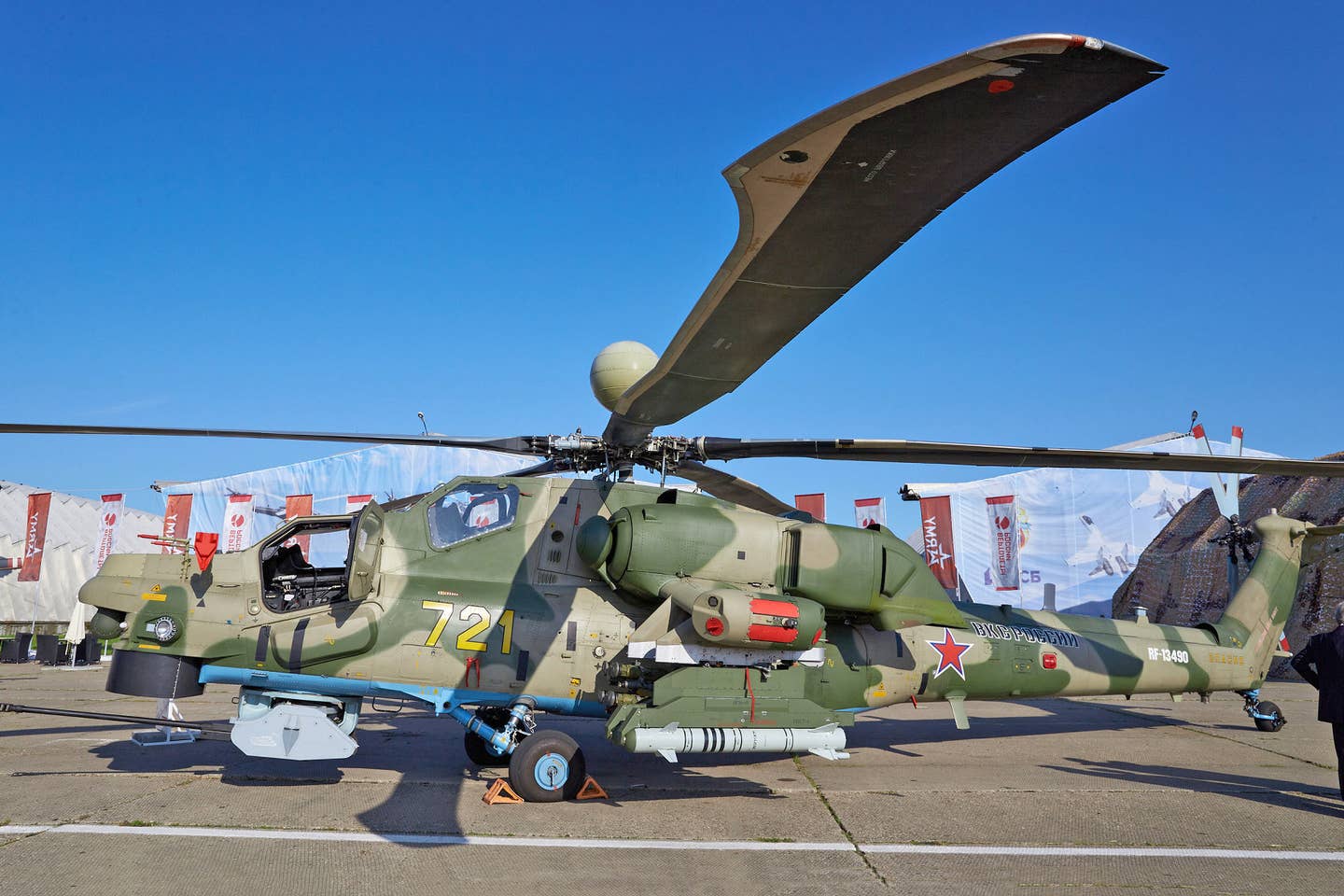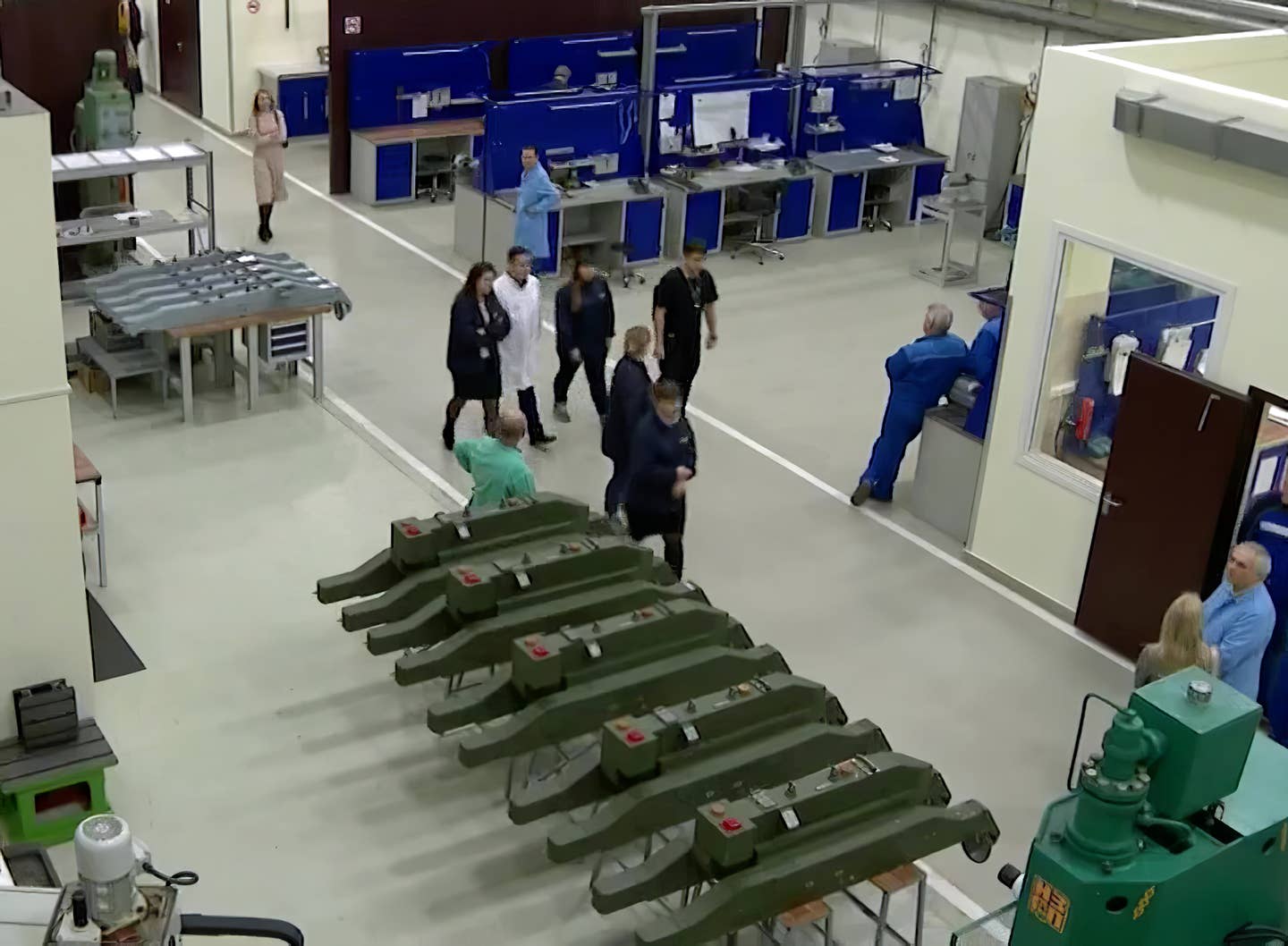The most recent visual evidence suggests that Russia is deploying the Mi-28NM “Night Hunter” helicopter, fitted with the new-generation LMUR, or Izdeliye 305 missile, in its conflict with Ukraine.
The first image of the advanced Mi-28NM attack helicopter used in the Ukraine War was shared by the Fighter Bomber Telegram account on October 15, 2022. The helicopter number, which looks like 41, had been poorly painted over in the photo.
Furthermore, the letter ‘Z,’ representing Russia’s invasion of Ukraine, was inscribed on the engine nozzle’s heat suppressor. The helicopter was thought to be from the Western Military District (WMD).
Later, several additional images and videos appeared showing Mi-28NMs in Ukraine. On January 14, 2023, the Fighter-bomber channel published a video from the cockpit of the Mi-28NM using the LMUR missile during a mission.
Both daytime and nighttime operations are shown in the video. A Mi-8 Hip transport helicopter, which is likely assigned to evacuate the crew if one of the Mi-28NM helicopters gets shot down, is shown in the video assisting a duo of Mi-28NM helicopters.
Video of Russian Mi-28MN attack helicopters launching Izdelie 305 LMUR missiles. The footage shows them operating with Mi-8AMTSh helicopters. https://t.co/rU8EnO9LUWhttps://t.co/q8DhBdQgq8 pic.twitter.com/kWTnPGepFD
— Rob Lee (@RALee85) January 15, 2023
The helicopter is equipped with two LMUR missiles on a double APU-L rail on the outer pylon beneath the right wing, and the other pylon appears empty. However, the video does not detect what is dangling beneath the left wing.
In a separate video, a Mi-28NM can be seen hauling one LMUR missile under its right wing. A B8V-20 rocket launcher and an extra fuel tank were also mounted in the helicopter.
The first video shows the launching sequence of the LMUR missile. When mounted on a rail launcher, the missile seeker is secured from dirt during low-level flight by a cover. The cover is raised immediately before the launch. The missile in the footage is shown striking a building.
The missile may have been fired from a great distance, beyond the anti-aircraft defenses of Ukraine. The LMUR missile has a maximum range of more than nine miles.

New LMUR Anti-Armor Missile
The acronym LMUR means Lyogkaya Mnogotselevaya Upravlayemaya Raketa or light multipurpose guided missile. This new weapon system began testing on the Mi-28NM in 2019.
Even though its name includes “light,” it weighs twice as much as more conventional Russian helicopter-launched ATGMs. The LMUR missile has a range of up to nine miles, which is twice as far as earlier Russian anti-tank missiles.
The LMUR differs from helicopter-launched anti-tank missiles as it features a two-way data link connecting the missile to the helicopter. The missile is directed to the target area using an inertial autopilot and course correction offered by a satellite navigation system.
The front of the missile contains four cruciform split fins in a canard aerodynamic shape. The warhead chamber is next, followed by the solid-fuel rocket engine. The massive cruciform wings are folded when the missile is transported and unfolded when it is suspended beneath the chopper.
The data link transmits the image from the missile’s thermal-imaging seeker to the helicopter pilot’s cockpit as it approaches the target. The guiding instructions are then sent back to the missile.

The helicopter employs the AS-BPLA system to interact with the missile. The antenna in the Mi-28NM is integrated into the top of the front fuselage, whereas the Ka-52M is carried in a teardrop-shaped pod slung beneath the left wing.
Technically, a single Mi-28NM can carry eight LMUR missiles on four APU-L twin launchers. However, it is difficult to envision how the weapon system operator would have enough time to direct such a significant number of missiles in one sortie.
Other aerial platforms may also utilize the new LMUR missile in the conflict. In addition to the Mi-28NM, another feasible option is the Mi-8MNP-2 special forces helicopter.
Besides that, the outcomes of these battles involving these helicopters appear to be crucial for the future of this weapon. Most images that are currently available show helicopters that are equipped with two missiles.
Nevertheless, the most recent imagery makes it evident that the sophisticated Mi-28NM version plays a significant role in the conflict in Ukraine. However, much about it, particularly its production and service use, is still unknown.
- Contact the author at ashishmichel(at)gmail.com
- Follow EurAsian Times on Google News




